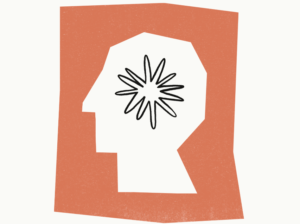 The unveiling of Anthropic’s Claude 3 models — Haiku, Sonnet, and Opus — presents an intriguing development in the AI sector, particularly for business leaders keen on understanding the evolving landscape of large language models (LLMs). Like Goldilocks navigating her options between too hot and too cold, companies are increasingly evaluating different offerings, looking to choose not just any model, but the one that aligns “just right” with their specific needs and goals.
The unveiling of Anthropic’s Claude 3 models — Haiku, Sonnet, and Opus — presents an intriguing development in the AI sector, particularly for business leaders keen on understanding the evolving landscape of large language models (LLMs). Like Goldilocks navigating her options between too hot and too cold, companies are increasingly evaluating different offerings, looking to choose not just any model, but the one that aligns “just right” with their specific needs and goals.
We wrote about this trend in our article on Zoho’s efforts to balance model size with maximum affordability. Like other LLM foundation model providers, Anthropic has intentionally created a hierarchy of models for different budgets and use cases.
Deciphering the Trio: Why Three Models, and What’s in a Name?
Anthropic’s choice to release three distinct models is a strategic nod to the varied needs and capacities of modern businesses. The naming convention itself is a clever reflection of each model’s essence and intended use case. Haiku, akin to the concise and impactful form of poetry, is designed for tasks that require speed and succinctness. Sonnet, suggesting a bit more complexity and length, is tailored for applications where a balance between depth and efficiency is key. Opus, reminiscent of a comprehensive body of work, is the most advanced, suitable for enterprises seeking the pinnacle of AI capability. (We had no influence on the choice of names, but agree that “Opus” should represent the peak of achievement!).
A Measured Advancement in AI
While the Claude 3 models mark a notable step forward for Anthropic, particularly with Opus surpassing benchmarks set by competitors like OpenAI’s GPT-4, it’s important to temper enthusiasm with pragmatism. These models are part of a rapidly advancing field where today’s leader can quickly become tomorrow’s runner-up. Their multimodal capabilities, which integrate text and image processing, are a signal of continued progress towards more versatile AI applications. Yet, the real-world impact of these advancements will depend on their accessibility, cost-efficiency, and integration into existing systems.
Practical Use Cases
For businesses, the utility of Haiku, Sonnet, and Opus will vary greatly based on specific needs and resource allocation.
- Haiku might be best suited for straightforward applications like generating quick responses in customer service chatbots or summarizing briefs.
- Sonnet could find its niche in balancing cost with capability, offering a more nuanced approach for content creation or data analysis that requires a blend of text and visual information.
- Opus, with its higher price point and advanced capabilities, is geared towards enterprises ready to invest in the most sophisticated AI tools for complex problem-solving or in-depth analysis.
Towards a Balanced Adoption of AI
While exploring Anthropic’s Claude 3 models through the Goldilocks lens, it’s crucial to acknowledge the broader landscape of CCaaS (Contact Center as a Service) solution providers. These innovators are on a constant quest for GenAI solutions that not only promise but deliver top-notch performance in areas pivotal to customer engagement: chat, question answering, call summarization, sentiment analysis, and real-time agent assistance, to name a few.
A growing trend among these providers is the experimentation with and adoption of smaller, more nimble models tailored to specific customer experience scenarios. This shift towards models that can be custom-trained for bespoke use cases speaks to an industry moving away from a one-size-fits-all approach, embracing instead the agility and specificity that smaller, often open-source models offer — all at a fraction of the cost of their larger, proprietary counterparts from giants like Open AI, Google, Anthropic, and others.
Yet, the arrival of Anthropic’s Claude 3 models — with their promise of matching or even surpassing the performance of the leading LLMs — is undeniably a moment of significance. It signals another potential shift in how we approach the integration of AI into customer service ecosystems. For CCaaS solution providers and businesses alike, the message is clear: the time is ripe to venture beyond the familiar and experiment with these new models. As the landscape of AI continues to evolve, so too does the opportunity to refine and redefine what’s possible in customer engagement. The Goldilocks view isn’t just about finding the right fit anymore; it’s about discovering new realms of possibility that are “just right” for the future of business.
Categories: Intelligent Assistants

 Conversational Intelligence Consolidation: Verint and Calabrio Make Strategic Acquisitions
Conversational Intelligence Consolidation: Verint and Calabrio Make Strategic Acquisitions  Wrapped in Words: Spotify Talks a Big Game (and Sounds It Too)
Wrapped in Words: Spotify Talks a Big Game (and Sounds It Too)  Amazon Nova: The New Star in Foundation Models
Amazon Nova: The New Star in Foundation Models  Uniphore Acquires ActionIQ: Takes a “Zero Data” Approach to Conversational Intelligence
Uniphore Acquires ActionIQ: Takes a “Zero Data” Approach to Conversational Intelligence